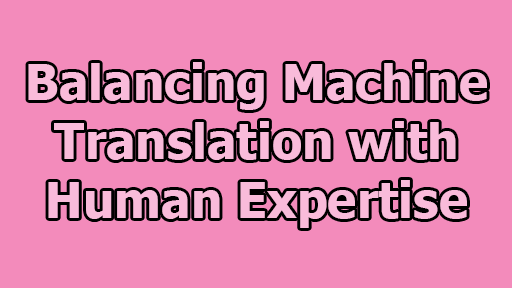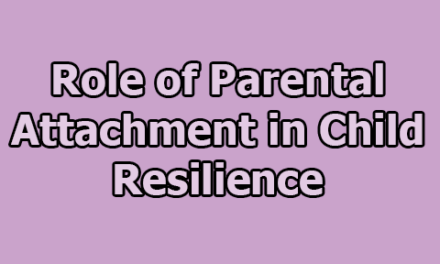Balancing Machine Translation with Human Expertise:
In our ever-globalizing world, the demand for multilingual communication is on the rise. With this surge in translation needs, Machine Translation (MT) has emerged as a powerful tool to assist in bridging language gaps efficiently. However, it’s essential to recognize that while MT can be an invaluable asset, it cannot entirely replace the expertise and quality assurance that human translators provide. In the rest of this article, we explore balancing machine translation with human expertise, taking into account various factors and best practices.
MT Types and Features:
Machine Translation (MT) is a versatile technology that has revolutionized the way we bridge language barriers. It’s essential to understand that MT is not a one-size-fits-all solution. Various MT systems exist, each with its unique strengths, weaknesses, and features. These systems are categorized into different types, such as rule-based, statistical, neural, and hybrid MT, and they employ distinct methods and algorithms to generate translations.
1. Rule-Based MT: This type of MT relies on predefined linguistic rules and dictionaries. It is effective for translating texts that adhere to rigid grammatical and syntactical structures. However, it may struggle with ambiguity and idiomatic expressions, making it less suitable for creative or colloquial content.
2. Statistical MT: Statistical MT systems utilize large bilingual corpora to make translation decisions based on statistical probabilities. This approach is versatile and can handle a variety of content types. However, it might not capture nuanced meaning effectively and can be sensitive to the quality of the training data.
3. Neural MT: Neural MT is the most recent and sophisticated approach, driven by deep learning techniques. It can handle complex sentence structures and nuances better than previous methods. Neural MT models are capable of learning from vast amounts of data, making them highly adaptable to various language pairs and domains.
4. Hybrid MT: Hybrid MT combines elements of the above approaches, often incorporating rule-based or statistical methods for post-processing the output of neural models. This approach aims to balance the strengths of different types, addressing the limitations of each.
The effectiveness of these MT types depends on various factors, including:
i. Language Pair: Some MT systems excel in specific language combinations, while others may struggle with rare or less-resourced languages.
ii. Domain: MT systems can be tailored to specific industries or domains, such as medical, legal, or technical translation. Customization helps in providing more accurate translations in specialized fields.
iii. Style: The style of the source text matters. Creative content, technical documents, and informal texts each present different challenges to MT systems.
iv. Purpose of the Text: Understanding the intended use of the translation is crucial. Is it for information, marketing, or entertainment? Different purposes might require varying levels of linguistic fluency and cultural sensitivity.
In addition to the types of MT, many systems offer features that can significantly enhance their utility:
- Customization: This feature allows users to adapt the MT system to specific terminology, jargon, or style guides, making it more accurate and contextually relevant. It’s especially beneficial for technical and specialized fields.
- Post-Editing: Post-editing is the process of human translators reviewing and refining the machine-generated translation. This step is essential for ensuring quality and correcting errors that MT may introduce. Post-editing is particularly valuable for professional and high-impact content.
- Quality Evaluation Tools: Quality evaluation tools provide objective metrics to assess the accuracy and fluency of the machine-generated translation. These tools help measure the reliability of MT output and guide improvements.
Balancing the choice of MT system type and its features is critical to achieving optimal results. It’s not just about selecting a type but also about understanding when and how to employ the various features to meet specific translation needs. Customization is ideal when precision and domain-specific terminology are crucial. Post-editing becomes indispensable when quality assurance is paramount. Quality evaluation tools ensure that the translation aligns with expectations and standards, aiding in continuous improvement.
The effectiveness of Machine Translation varies based on the type of MT system, the context in which it is used, and the features it offers. By carefully considering these factors and understanding their implications, users can harness the power of MT to address their unique translation challenges.
MT Benefits and Limitations:
MT offers a multitude of benefits, including speed, cost-effectiveness, consistency, and scalability. It can help translate large volumes of content in a shorter timeframe, reduce translation expenses, maintain terminology consistency, and handle complex projects efficiently. However, MT has limitations that must be considered, such as grammatical errors, lexical ambiguity, cultural sensitivity issues, and ethical concerns. It may not always capture nuances, tone, context, or the intent of the source text, posing challenges, especially in creative or culturally sensitive content.
Additionally, data privacy and security can be at risk when using MT, as sensitive information might be exposed to the MT system. Hence, it is essential to be cautious about what content is processed through MT.
Human Expertise and Quality:
Despite advancements in MT, human expertise remains indispensable for producing reliable and effective translations. Human translators and reviewers bring linguistic and cultural knowledge, creativity, and critical thinking to the table, all of which MT struggles to replicate. They can also identify and rectify errors, adapt the style and tone, and ensure text coherence and clarity. Moreover, human input and review are crucial for evaluating the quality of the MT output, ensuring it meets expectations and standards.
Balancing MT and Human Input:
To find the optimal balance between MT and human expertise, several factors need to be considered. These include the type and purpose of the text, the target audience, quality requirements, and budget constraints. Depending on these factors, the most suitable MT option and the level of human involvement can be determined. For instance, a technical manual for a professional audience may require a customized MT system with extensive human review, while a social media post for a general audience might only need a generic MT system with minimal human review.
Best Practices for Using MT:
To use MT effectively and efficiently, adhering to best practices is vital:
- Prepare the source text: Ensure its quality, clarity, and simplicity to optimize MT performance.
- Select the appropriate MT system: Choose the system and features that align with your project’s specific language pair and requirements.
- Customize the MT system: Adapt it to your unique terminology, glossaries, and style guides for better accuracy.
- Post-edit the MT output: Carefully review and edit the machine-generated translation to correct errors and inconsistencies.
- Evaluate the quality: Use metrics, tools, and feedback to assess the MT output’s accuracy.
- Training and updating: Continuously provide the MT system with new data and information to improve its performance.
Future Trends and Challenges:
MT is continually evolving due to technological advancements and innovation. Future trends might include more advanced and adaptive MT systems, such as self-learning, interactive, and multimodal MT. Integration of MT with other tools and platforms, such as voice recognition, chatbots, and cloud computing, may become more prevalent. New languages and domains, including endangered languages, slang, and emojis, might also gain traction.
Moreover, the ethical and responsible use of MT is of utmost importance, encompassing data protection, privacy, and adherence to quality standards.
In conclusion, the integration of Machine Translation with human expertise can offer the best of both worlds in the realm of translation. It allows for the efficient processing of large volumes of content while maintaining the quality, accuracy, and cultural nuances that human translators can provide. By carefully considering the factors, limitations, and best practices outlined in this article, organizations can strike a harmonious balance that optimizes their translation processes.

Library Lecturer at Nurul Amin Degree College










